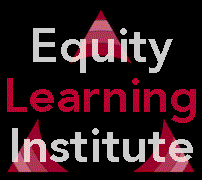
|
|
|
|
an EdChange project by Paul C. Gorski
|




|
Transforming Myself to Transform My School (July 2001) by Paul C. Gorski, Hamline University and EdChange Multicultural education must be a transformational process; that is, it must be a process through which all aspects of education are examined and critiqued and rebuilt on ideals of equity and social justice. Most people who identify with multicultural education as an important process for improving education for all students agree that transformation--large scale change--is needed in curriculum, pedagogy, assessment, and other aspects of schools and schooling. A majority of multicultural education courses and workshops focus on these pieces of the education puzzle. Most multicultural educators would also agree that some level of self-reflection and self-critique are important. But even those who are willing to fully engage in a discussion about curriculum transformation are often resistant to a discussion about self-change, or self-transformation, at the same level or depth. One reason for this is that it is extremely difficult work to be self-critical and to open oneself up to the level of outside critique necessary for transformation. Just as my attempts at curriculum transformation must begin with a reconsideration of whose voices are being heard and not being heard and whose perspectives are being valued or not valued, all with an initial and constant focus on equity, my transformation of self must begin with a reconsideration and examination of everything I carry into the classroom with me--my value system, prejudices, biases, assumptions, pre-service experience, preferred learning styles, experiences as a student, etc.--and how these ensure, or interfere with, an equitable learning community for all students. This is a daunting, scary, exhausting process. But even more daunting, scary, and exhausting is the realization that no matter how liberal and open and accepting I fancy myself to be, I, like everyone else, have prejudices, biases, and assumptions, and these prejudices, biases, and assumptions inform my teaching and my interactions with students as well as the ways in which my students and colleagues experience me. The intimidation factor of this process is intensified by the fact that I am already being critiqued through standards and tests and assessments by a system that seems to depersonalize teaching. I am already vulnerable to administrators, supervisors, parents, colleagues, national and local standards, and even my students. At the end of the day, it is often difficult to also answer to myself. Another contextual factor that makes the process of self-transformation difficult is that I am constantly bombarded with messages that I should be "color blind" or that I should "treat all kids alike." Some people even suggest that by discussing prejudices and discrimination or different forms of oppression like racism or sexism, I am actually contributing to, or causing, the oppression itself. After all, we are teachers. We like kids. We want our students to achieve and succeed. I cannot possibly have a prejudice or take ownership of a bias because having a prejudice or a bias means that I must be a bad teacher. But I disagree. I know that I have prejudices and biases, and failing to address them or challenge myself to think more critically about my role and its complexities in relation to those prejudices would constrain me--would, in effect, make it impossible for me to be the most effective educator I can be for all of my students. The next question, then, is how to engage in this process of self-transformation. What are some entry points? What are some concrete things I can do or think about? Through my own reflection and critique, I developed a list of ten critical and self-critical things I can do to be a better multicultural educator. The list is not meant to be exhaustive, but a starting point. And I am not intending to make a statement about what every educator must do, but instead voicing and owning things I, as an educator, can and should do to begin the process of transforming schools by transforming myself. The list appears below. Ten Critical and Self-critical Things I Can Do to Be a Better Multicultural Educator
|